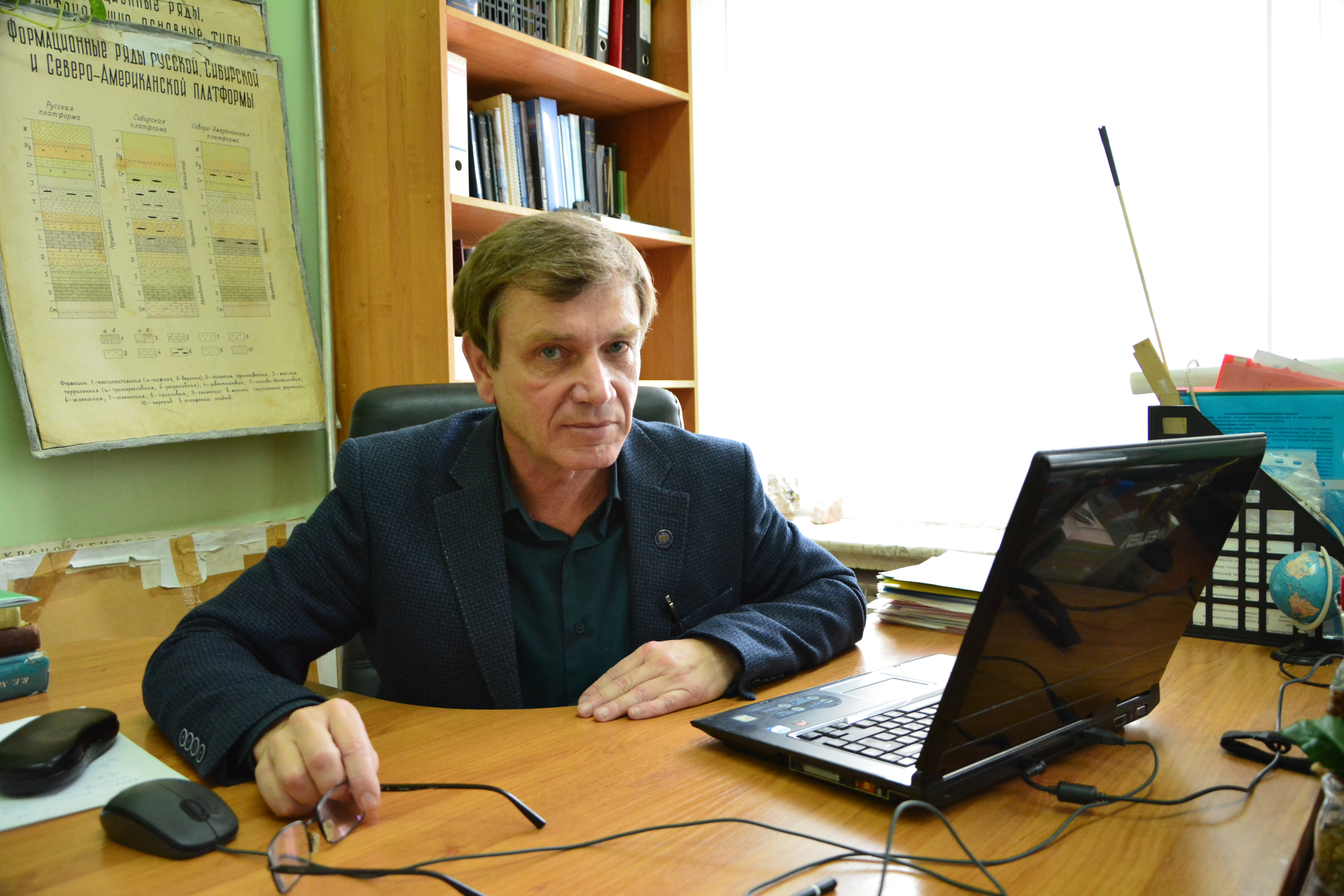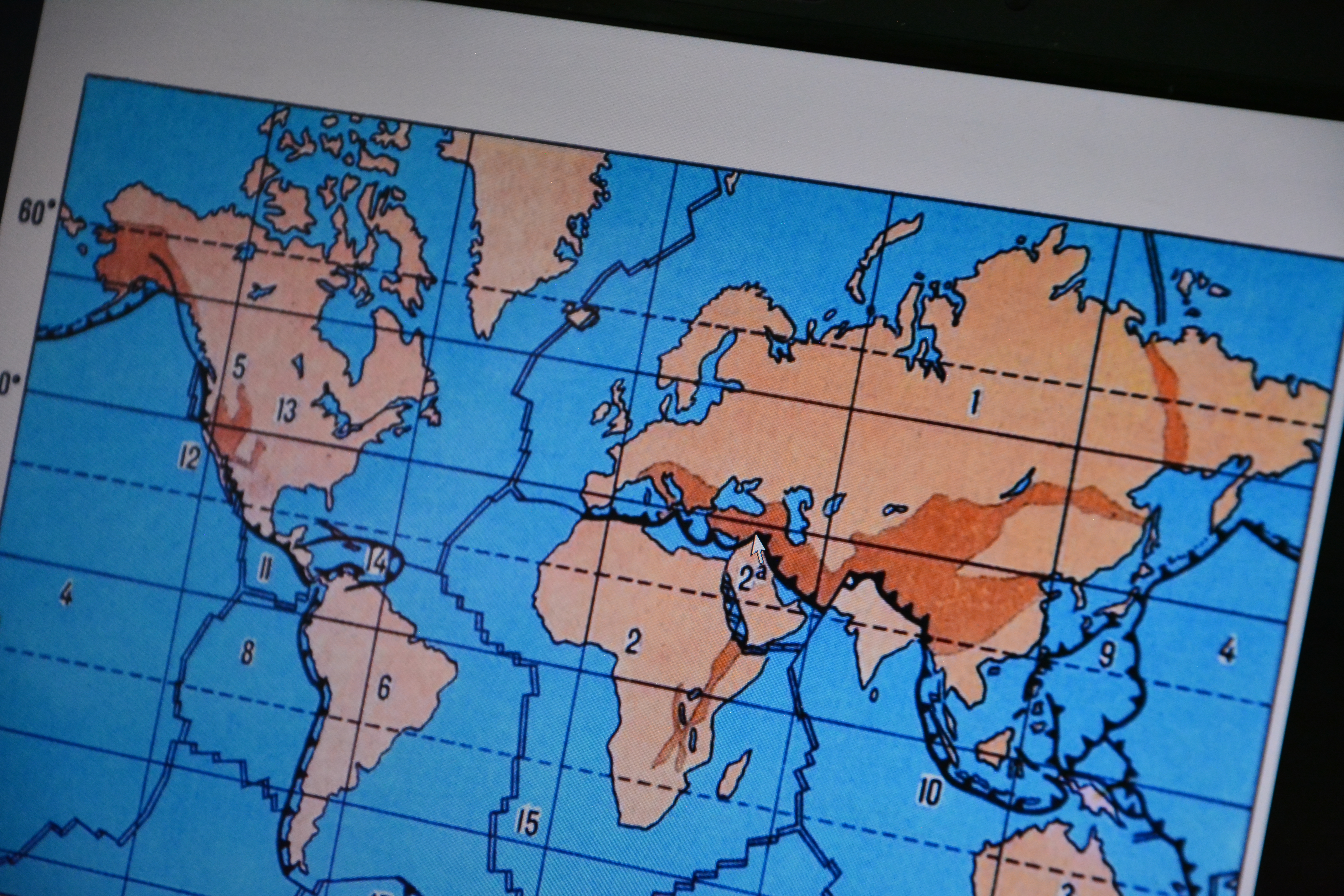A professor from Saratov State University explains the causes and consequences of the earthquakes in February 2023 in Turkey, talks about whether earthquakes can be predicted, and gives recommendations on how to behave in seismically unfavourable areas.

In early February, the country's strongest earthquake in the last 84 years occurred in southeastern Turkey. Its magnitude was 7.8 points. It and the series of seismic tremors that followed it claimed the lives of tens of thousands of people. Professor Andrei Guzhikov, Chair of the Department of General Geology and Minerals of the Faculty of Geology, SSU, tells about the causes of the disaster and whether the echoes of the earthquake threaten Russia.
– What is the cause of the earthquakes in Turkey?
– All earthquakes occur because cracks form in the earth's crust. And cracks are formed from the stress state in which the entire Earth's crust is located. At depth, it is in a tense state, because tens of kilometers of rocks are pressing down on it from above. The earth is divided into lithospheric plates, which move, press on each other and also create a tense state. A very rough but true analogy: if you squeeze a nut with tongs, it retains its shape for a while, and then, when the strength limit is exceeded, it cracks and crumbles in different directions. The same thing happens in the earth's crust: it is pressed vertically and horizontally, and eventually it cracks, but unlike a nut it does not fly apart, as it is squeezed from all sides. But at the moment when a crack forms, a huge amount of seismic energy is released, elastic waves propagate in the lithosphere and, reaching the earth's surface, cause enormous destruction.
Many earthquakes are not associated with the formation of new cracks, but with existing cracks. There are long–lived cracks - faults. There are a lot of them, the whole Earth's crust is broken up on them. Blocks of the Earth's crust also interact along these faults. They remain stationary relative to each other for a while, but when the load on them increases and increases, they shift relative to each other. This process is also accompanied by the release of energy – an earthquake occurs.
Earthquakes are distributed very unevenly across our planet. All of them are concentrated on the boundaries of large lithospheric plates. And Turkey, specifically the area where the earthquake occurred, is just on the border of two lithospheric plates: the African-Arabian and the Eurasian. Turkey is one of the most seismically dangerous regions of our planet. But despite all the tragedy of the situation, and it is difficult to say such words here, from a geological point of view there is nothing outstanding about this event. Yes, a strong earthquake. But such earthquakes with a magnitude of 7.7-7.8 occur on average about twenty per year. This is not such a rare occurrence. And this earthquake turned out to be in a densely populated area, which is why there are such a huge number of victims. Seismologists have a wonderful expression that it's not an earthquake that kills, they kill at home.
The depth of the earthquake is very important. There are deep-focus earthquake foci, when the focus occurs at a depth of 100 kilometers or more. In this case, while the waves pass upward, their energy will weaken, and even in the epicenter, the force of destruction will not be so critical. It's really bad when earthquake foci are shallow. This is exactly the case in Turkey: the depth of the hearth is only 18 kilometers, and also under densely populated cities and megacities.
For comparison, let's recall the 2015 Himalayan earthquake. These earthquakes occurred within the same Mediterranean-Himalayan seismic belt and are completely comparable in magnitude and depth of the hearth. However, in the Himalayas, the number of victims is 4 people. This is solely because the Himalayan peaks are sparsely populated.
The number of earthquake victims is not always related to the intensity of the earthquake. Yes, magnitude 7 is the lower threshold of earthquakes, which are considered catastrophic and can lead to serious consequences. Nevertheless, the number of victims can reach tens of thousands even at weaker magnitudes – if the epicenter of the earthquake turns out to be in a large metropolis.
Of course, it is difficult to talk about a foreign country. But it is obvious that measures to ensure the earthquake resistance of buildings are not fully observed there. There is no doubt that in Turkey, as in a seismically dangerous region, there are seismic zoning maps and appropriate safety standards. And the fact that there is such a huge amount of destruction, despite the strength of the earthquake and other adverse factors, indicates a violation of regulatory documents.
This is not only a problem for Turkey. For example, the 1988 Spitak earthquake in Armenia. It was less intense, its magnitude was about 7. The number of victims was also very large – officially 25 thousand. Everyone knows that this number of victims could have been avoided if the buildings there had been built in compliance with the norms. All buildings built according to the norms have survived.
The Ashgabat earthquake of 1948 is similar in characteristics: magnitude - 7.3, the focus is at a depth of 18 kilometers, under the capital of Turkmenistan. There were more than a hundred thousand victims. But at that time there were no building standards for earthquake resistance, and many houses were very old.

Earthquake area in Turkey on the boundary of lithospheric plates
– Why are there a series of earthquakes?
– According to the geological laws that follow from the physical ones. Foreshocks – tremors preceding the main earthquake occur before the start of a sharp movement of rocks along a fault in the earth's crust. It is extremely unlikely that this shift will be one-act. Very often, the movement continues, but with a lower intensity, which is accompanied by aftershocks – seismic tremors after the main impact.
The mechanism of the earthquake has been well studied. The factors provoking an earthquake are known. For example, if a lot of water leaks into the fault zone, it can stimulate an earthquake. In areas of artificial reservoirs, seismicity increases precisely for this reason.
This is not directly related to Turkey, since this area already represents a tectonic fault node. The famous East Anatolian fault is located where the earthquake has now occurred, and moreover, in the place where a series of earthquakes occurred, the Dead Sea fault rests against it. Thus, no additional factors are needed there – earthquakes of this magnitude have occurred and will continue to occur there with regularity about once every 100 years.
The seismic activity of our planet has indeed increased somewhat now. But the territory of Turkey is seismically active even without this strengthening. Nevertheless, Turkey, in comparison, for example, with Japan, is still not such an active seismic zone. The magnitude of the last largest earthquake in the history of mankind, the Sendai earthquake, had a magnitude over 9. Nevertheless, there were fewer victims there.
Moreover, if it were not for the tsunami, which they could not foresee, this number would be even lower. The Japanese have already learned to build in such a way that even with the strongest earthquakes, their buildings stand still. They fluctuate, crack, glass flies out, but such destruction as is now in Turkey does not occur in large numbers.

The Dead Sea fault rests on the East Anatolian fault
– After the earthquakes in Turkey, tremors were noticed in Sochi, in the Kuril Islands and even in the Arctic. Are these earthquakes related?
– I think that there is no need to look for a direct correlation between the earthquake in Turkey and the tremors in Sochi or in the Laptev Sea. There are several earthquakes with a magnitude of about 7 and dozens, hundreds of seismic tremors with a magnitude of 5-6 on the planet every day, and no one pays attention to them. But as soon as a catastrophic earthquake with a large number of victims occurs, then, of course, they immediately begin to pay attention to everything else.
There are many interactive maps of seismic activity on the Internet, where you can view the number of earthquakes on the planet in the last 24 hours online. It shows dozens and even hundreds of earthquakes every day. On any given day, you can see that there were seismic tremors of varying intensity in Russia.
If we talk about Russia, then, of course, most of our territory is seismically calm areas. We, the residents of Saratov, are lucky: we live in the center of an ancient platform, where earthquakes are the last thing to be afraid of. There are seismically dangerous zones in Russia: Crimea, the Caucasus, and almost the entire Far East. Everyone remembers the catastrophic earthquake of 1995 on Sakhalin, in Neftegorsk. The south of Siberia is also seismic: in 2003, a strong earthquake occurred in Altai. But these zones are still a smaller part of our country's territory.
Russia has a federal system of seismological observations and earthquake forecasting, and there are maps of general seismic zoning. Most of it is a white zone, there is no need to take any special measures to counteract seismic danger. And Crimea, the Caucasus, the Far East and the south of Siberia are painted over on these maps in different colors corresponding to different levels of seismic hazard.
In general, there are three types of such cards: A, B and C. Map A shows where an earthquake of a certain intensity will not occur in the next 50 years, with a 10% error probability. Card B has a 5% chance of error, and C has a 1% chance. Category C maps are used in the construction of nuclear power plants. No commission can accept any house or other structure unless it is convinced that all construction measures are being followed to ensure the preservation of the object in the event of an earthquake of such intensity.
– So an earthquake can always be predicted?
– There are concepts of long–term and medium-term forecasts, and in this sense, of course, yes. The situation is calculated for decades with such mathematical accuracy, when the probability of error can be estimated as a percentage, when it is guaranteed that in a certain area in the next 50 years there will definitely not be an earthquake with a force greater than, for example, 7 points.
And there is the concept of a short-term forecast. Things are much more complicated here. The short-term forecast claims that we would have to say that at least in early February, an earthquake of this intensity will occur in a particular area of Turkey. And if we could say that for sure, then we should have just evacuated the residents of the cities. Seismologists all over the world are working on short-term forecasts, but their reliability still leaves much to be desired. And, by the way, the problem lies not only in the reliability of the prediction, but also in the following. Imagine that we predicted with high probability that there would be such an earthquake in Adana, the city that is currently most devastated. They predicted it the day before. So what? With such an urgent evacuation of more than two million people, there is a fear that the number of victims will not be less than in the earthquake itself.
– The media writes that the lithospheric plate has shifted by three meters. It's true?
– I think that such reports are the result of an unsuccessful translation by foreign media or an initially incorrect interpretation by journalists. When it is said that the Arabian plate has shifted relative to the Anatolian plate by 3 meters, it is more correct to say that there have been movements of individual large blocks. Of course, there has been a major shift, and a displacement of 3 meters is actually recorded in this place. But it is premature to say that now the entire lithospheric plate has shifted by 3 meters.
Lithospheric plates move at an average speed of several centimeters per year. What does it consist of? During this earthquake, there was indeed a displacement of a large lithospheric block by 3 meters, and this has now been recorded. A large block with an area of tens of thousands of kilometers may shift, several cities may be located on its territory – such a huge shift can happen. After, say, 10 years in another place, for example, something will shift by 5 meters in the same direction. In 5 years, it will still shift by a few meters, and if later, after 100 years, we sum up all these shifts, we will say that as a result, the entire Arabian plate has moved by 3 meters during this time. But when talking about a specific earthquake, it is more appropriate to say that a separate large block has moved. We cannot claim that the whole plate has shifted now, at least it is not easy to justify this.
– How can earthquake damage be reduced?
– First of all, it is compliance with all construction requirements. This is the most important thing. The best way is not to settle in seismic zones at all, not to build cities there, but this is impossible. It so happened that the most favorable climatic zones very often coincide with territories with high seismicity. Therefore, there is nowhere to go and you just need to build taking into account all the necessary norms. And it's possible, it's real.
– What are the main recommendations that urban residents should follow when they are caught in an earthquake?
– Don't panic, of course. It is unusual for us, residents of flat territories, to talk about this, for us it is still irrelevant, but if you imagine yourself in the place of residents of Central Asia or the Caucasus, then in case of an earthquake it is always better to keep in one place, in some briefcase, a set of documents that always need to be grabbed at the first strong seismic tremors with myself. The first step is to leave the building and try to move away from it to a safe distance. The higher the house, the further away you need to run away from it. If you manage to do this, nothing will happen to you, and the probability that a crack will open under your feet is absolutely minimal. In any case, do not use the elevator if you are in a multi-storey building, go down the stairs only, because in case of an earthquake, the elevator will jam in the first place. And finally, if you do not have time to run out, and the house begins to shake violently, as a last resort, residents of earthquake-prone regions are recommended to stand in doorways.
Interviewed by Polina Gromova
Translated by Lyudmila Yefremova







